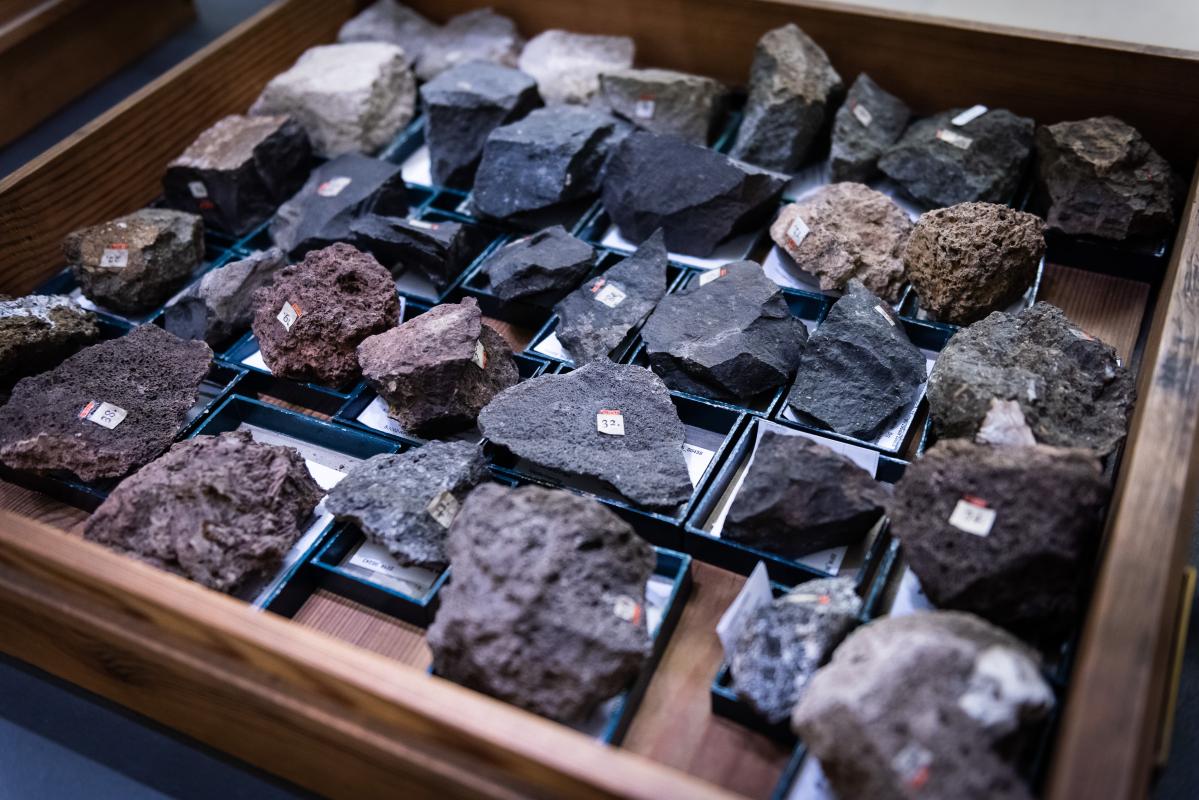Acquisitions to the Mineralogical Museum in Berlin (1770-1840)
Natural history collections are primarily comprised of object acquired through donation. The mineral and petrograph collection at the Museum für Naturkunde Berlin is no exception and was granted several private collections in the first decades of its establishment. These rock samples and mineral specimens were valued not only for their epistemic worth, but for their economic significance as well.
Aiming to expand upon the dominant narrative that focuses on acquisition history, this project considered the contemporary economic and political dimensions of the collection’s history. The acquisitions tell the story of how the museum’s institutionalization was embedded in the project of modern statehood. This history seeks to elucidate the relation between science and politics – the museum and the state – in Europe during the transition from early modern to modern. This research approached acquisitions as sources for understanding how ideas of state, nation, and science were negotiated with regard to the museum in the first decades of the 19th century.
The project explored donations by the following individuals:
Carl Wilhelm Nose (1753–1835)
Carl Ludwig Giesecke (1761–1833)
Magnus von Petersen (1764–1832)
Dietrich Ludwig Gustav Karsten (1768–1810)
Leopold von Buch (1774–1853)
Alexander von Humboldt (1769–1859)
Johann Anton Stolz (1778–1855)
Andreas Christian Zipser (1783–1864)
Carl von Oeynhausen (1795–1865)
Friedrich Hoffmann (1797–1836)
Ernst Heinrich von Dechen (1800–1889)
Hermann Abich (1806–1886)
Funding
The project was sponsored by the Fritz Thyssen Foundation.
Publications
Angela Strauß: Objects of Politics: The Appropriation of Earth Science Collections in Prussia during the Long Nineteenth Century, Museum & Society 22/2–3 (2024). DOI: https://doi.org/10.29311/mas.v22i2-3.4595
Strauß, Angela/Ralf Thomas Schmitt (Hrsg.): Vom Steinbruch ins Atelier. Die Mineralogische Sammlung im Museum für Naturkunde Berlin, Laborberichte Band 12, Weimar 2024.
Strauß, Angela: Zuschreibung der Werte. Gutachten zu geowissenschaftlichen Sammlungen in Preußen (1810-1840), in: Caren Reimann/Joëlle Weis (Hrsg.), Unbezahlbar? Vormoderne Sammlungsökonomie, Kulturen des Sammelns. Akteure, Objekte, Medien 8, 1. Aufl., Göttingen 2024, S. 203–225. DOI: https://doi.org/10.15499/kds-008-008
Strauß, Angela: Rock Value. Scientific and Economic Conditions for Collecting Minerals in the Early Nineteenth Century, Journal of the History of Collections 35/1 (2023), S. 77–90. DOI:https://doi.org/10.1093/jhc/fhac019
